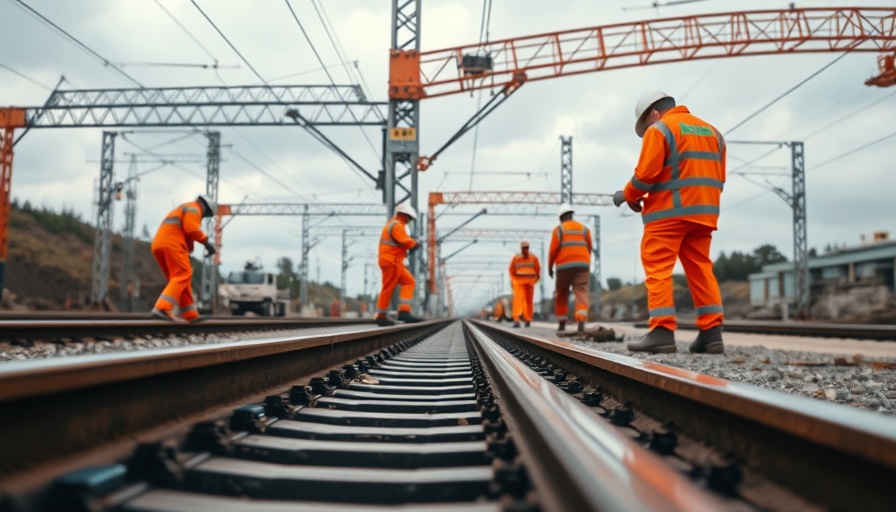
Understanding the Challenges of Network Rail's Spending Shift
Network Rail is navigating through challenging waters as it embarks on the first year of Control Period 7 (CP7), revealing an £8.8 billion supplier spend that raises eyebrows among industry players. This first-year report indicates a 5% decline in overall investment compared to the previous year, prompting concerns over the future workload for contractors.
Impact of Lower Expenditure on the Construction Sector
The decline in spending is a stark reality for many construction firms, especially small and medium-sized enterprises (SMEs) which make up about 70% of Network Rail's suppliers. However, the report highlights a significant 11% drop in direct spend with SMEs—an alarming statistic given that these firms often contribute to innovation and flexibility within the supply chain. With more work being funneled through tier one contractors, the distribution of resources may lead to further marginalization of smaller players in the sector.
What Does This Mean for Industry Stakeholders?
For builders and contractors, understanding this shift is imperative. As spending contracts, workloads become less predictable and the once robust avenues for smaller firms may close. Stakeholders are calling for greater transparency and a strategy that balances expenditure with the need to support a diverse range of suppliers. With the evolving economic climate, greater collaboration and understanding between Network Rail and its contractors could pave the way for new methods of operating that are sustainable and equitable.
Long-Term Predictions for Network Rail Spending
Looking ahead, several experts are voicing their concerns over the trajectory of Network Rail’s investments. If current trends persist, we could see further decreases in funding, especially for smaller firms. Others argue that this presents an opportunity for a fundamental reevaluation of contracting strategies that could benefit all parties involved, potentially leading to a more streamlined and effective procurement process.
Counterarguments: Growth Potential Amidst Spending Cuts
While there are serious concerns about the shrinking budget, some experts posit that this may create a healthier competitive environment. By consolidating spending, Network Rail could drive more innovation and efficiency in projects, harnessing the proven capabilities of established contractors. This perspective suggests that rather than a reduction of opportunities, there's potential for contractors to elevate their offerings and enhance collaboration across the supply chain.
Insights from Industry Leaders on Adjusting Strategies
Many industry leaders emphasize the importance of adapting strategies to meet new challenges. As the landscape changes, builders and contractors should consider diversifying their portfolios and looking for partnerships that can strengthen their competitive edge. The insights gathered from industry roundtables indicate that sharing resources and expertise might be key to thriving in this new environment.
Conclusion: Navigating a Shifting Landscape
The landscape of contracting with Network Rail during CP7 is undoubtedly shifting. As spending constraints challenge the traditional roles within the supply chain, it becomes increasingly vital for all stakeholders to adapt and innovate. By fostering communication and collaboration, there is potential not just for survival, but for collective growth as the landscape continues to evolve.
As the construction industry braces for these changes, it is essential for contractors, builders, and suppliers to stay informed and engaged with developments. Now is the time to strategize and redefine partnerships in the pursuit of long-term sustainability and success.
 Add Row
Add Row  Add
Add 




Write A Comment